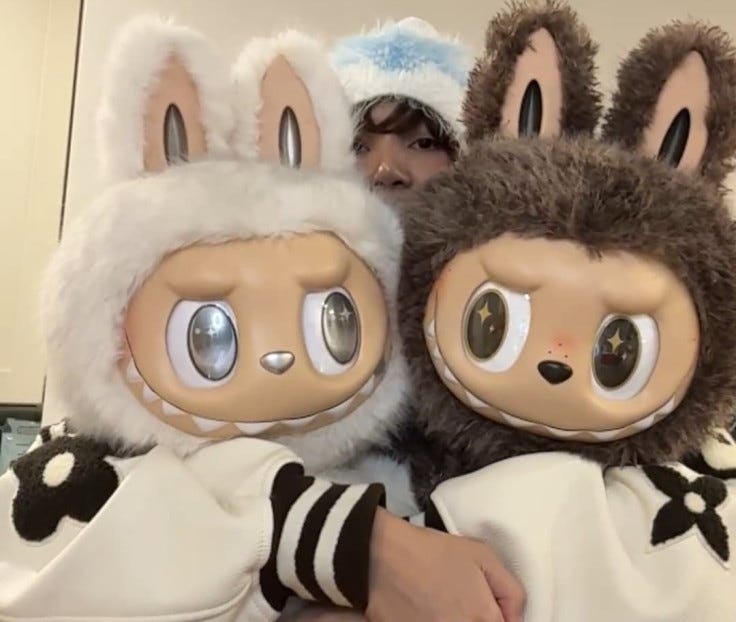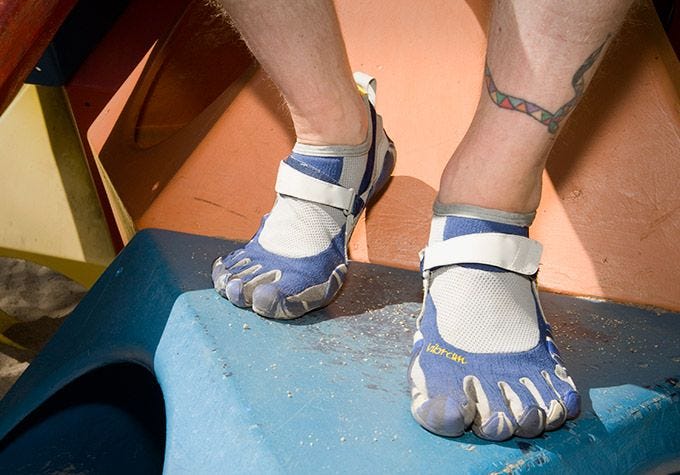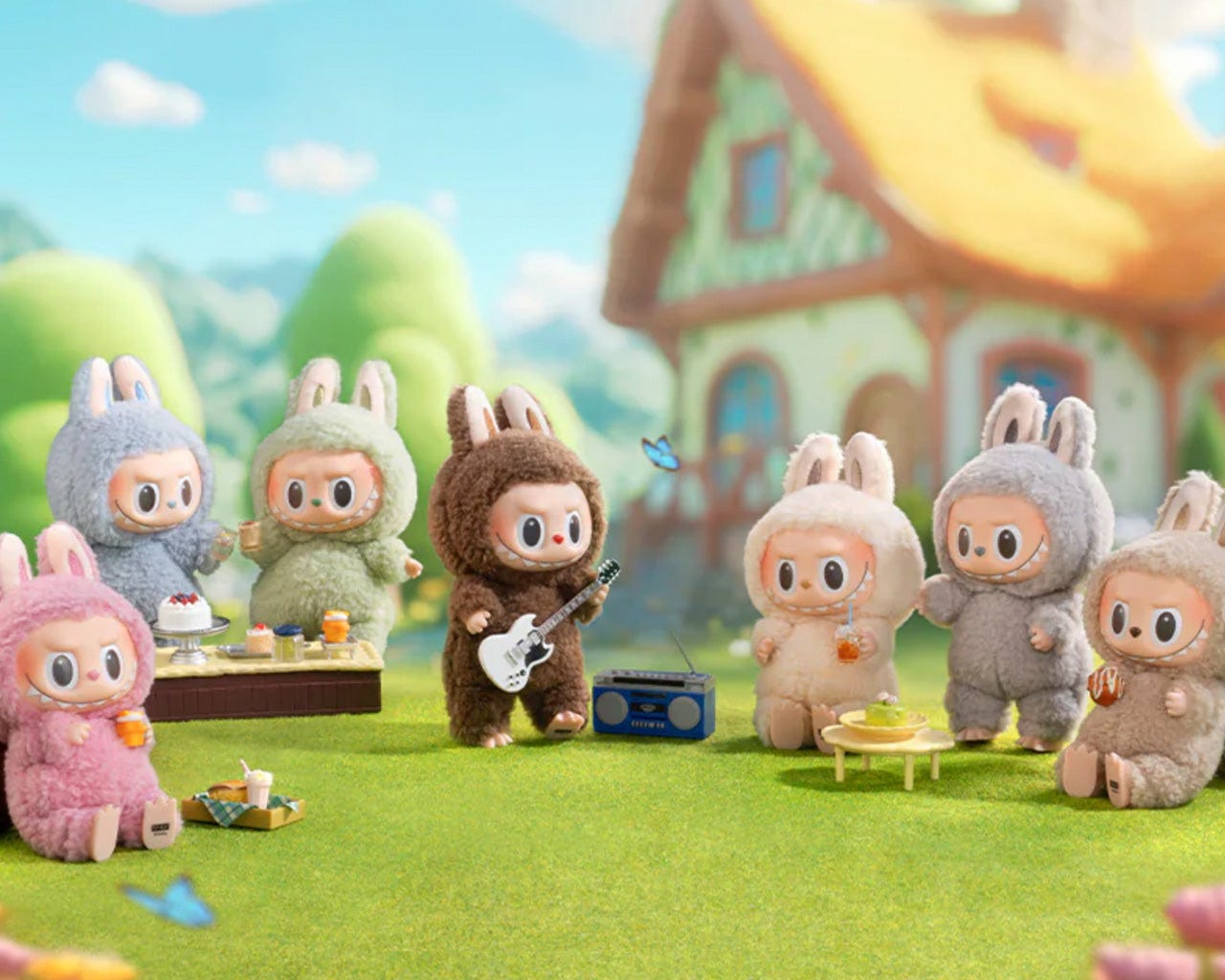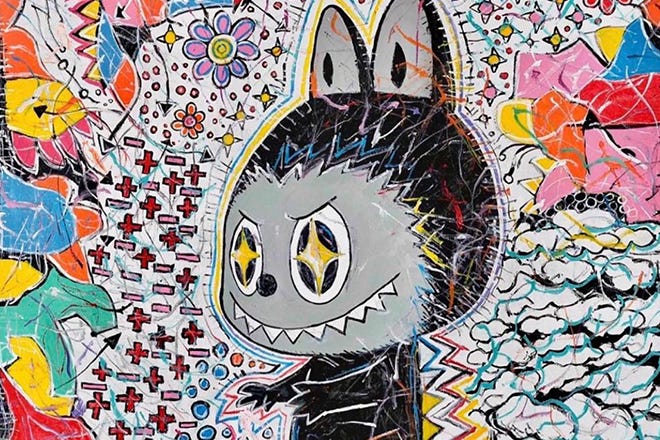I Hate Labubu
A rant about blindly following algorithmically generated trends
Note: This article is more of a rant, it’s not meant to provide insane insights into this trend. I just want to complain so don’t expect like an expert, well-sourced opinion on Labubus, please.
Is it just me, or does it feel like every so often, we as a society are handed toys to play with? In the 2010s, it was the Lime Scooter and those ridiculous “hoverboards.” They just appeared out of nowhere, and everyone collectively shrugged, said “fuck it,” and started playing with these random items. Fashion trends operate the same way. Influencers on TikTok and Instagram start wearing dumb pieces like Maison Margiela Tabis, jeans with a penis spray-painted on them, those god-awful toe shoes, and suddenly people just have them on.
But what if there was a dumbass trend item to end all dumbass trend items?
Enter: Labubu.
With the sharp rise in American interest in various Asian cultures thanks to film, animated TV shows, music like J-pop and K-pop, cuisine (hot pot, sushi, dim sum, etc.), it makes sense that something like Labubu would rise to prominence. It had stiff competition from similar abominations like Sonny Angels, Monchhichi monkeys, and others, but somehow these freaky little monsters clawed their way to the top. So where did they even come from?
The general concept and design of Labubu had been floating around since the '70s and '80s, but it wasn’t solidified into an actual IP until 2015, when Chinese illustrator Kasing Lung debuted the character in a book called The Monsters. That same year, figurines based on the character started getting manufactured, but Labubu didn’t really go mainstream until 2019, when Pop Mart acquired it.
Pop Mart, founded in 2010 by Wang Ning, is a multi-billion-dollar company built around collectible in-house IPs. Its business model relies on the “blind box” system, where customers don’t know which version of a toy they’re buying. It’s not new, Yu-Gi-Oh! and Pokémon cards did the same thing, and games like Counter-Strike popularized it digitally. It’s basically legalized gambling for kids. Parents drop hundreds, sometimes thousands, for a chance at a golden or holographic piece of plastic or paper. These companies control the scarcity completely, it costs them nothing extra to produce the “rare” ones.
Labubu’s recent explosion in popularity came thanks to the perfect salesperson: world-famous K-pop star Lisa. Kids idolize her, teens love her music, and adults might’ve caught her on the latest season of White Lotus. She’s one of the most recognizable people on the planet. So, when she was seen with a Labubu figure clipped to her purse, resale prices shot up astronomically. Labubu now accounts for a quarter of Pop Mart’s revenue. Rihanna, Dua Lipa, and Kim Kardashian have all been spotted with one. All it takes is a few A-listers for the trend to trickle down to B-listers, TikTokers, YouTubers—and then the counterfeit market kicks in so that every woman on Earth can slap a Labubu on her bag.
I’m laying all this out, so you understand: we are the marks. These aren’t organic “phenomena”, they’re trends manufactured by companies like Pop Mart and force-fed to us through celebrities and the “For You” tab. People jump on whatever trend influencers push without thinking. That’s why every single girl in New York City is wearing Sambas right now, just like they were all wearing Panda Dunks last year. No one gets to be an individual anymore. Conformity is the price of cultural relevance, and media outlets run endless thinkpieces explaining why we have to care about this stuff, even tying it to random shit like “queer identity.” It’s a clown show. And I’m honestly embarrassed by how many people are willing to throw their paychecks at this nonsense.
If this were just a kids’ trend, I wouldn’t even bother writing this. You wouldn’t catch me doing on the ground reporting at an anti-ICE Roblox protest. Kids will be kids. Maybe they’re the ones who kicked off the Labubu craze with their blind-box addictions, and that makes sense, psychologically. But I’m writing this for the adults in the room: get a grip.
These things are ugly as fuck. They don’t look cool as accessories. And in a few years, most of you will look back and cringe. “OMG, remember when we all bought Labubus and clipped them to our bags? Remember when we stood in line for 12 hours just to get one, and they were sold out? Remember when we bought fake ones off the black market?” No. I don’t remember that, because I don’t let my phone tell me what to buy and what to do.
That said, I do think the Labubu memes are hilarious. The Dubai Chocolate collabs, the grills, the sex toys, the “calling Labubu at 3AM” YouTube videos; it’s all peak comedy when viewed from afar. I know this writing won’t change anything. It won’t dent sales. My only consolation is that the more popular this gets, the more material I have to mock.
My real point is simple: I just wish people would be a bit more unique. It’s wild to see grown adults sprint from phone screen to store to run after whatever is next. For kids, again, I get it. But adults should know better. We should be regulating this stuff to prevent children from getting addicted to collectibles or novelty foods from MrBeast. But for adults, it’s inexcusable, and honestly, kind of pathetic.
This page has always been about legitimate meritocracy. Celebrating the best albums, the best artists. But way too often, I see people throw themselves in front of a train for complete mid, and I’ll never understand why. Sure, it makes sense statistically: most people fall in the middle of the bell curve. But I still wish more people would figure out what they like and pursue that, instead of letting whatever trend is popular dictate their whole identity.








I laughed so hard at “these things are ugly as fuck” 😭😭 my sides still hurt hahaha
True. I like plushies and trinkets that connect me to my interests or what I liked as a kid (as a reminder of the influences that made me who I am) that is why I cannot understand the labubu craze, like wtf are you connecting with?